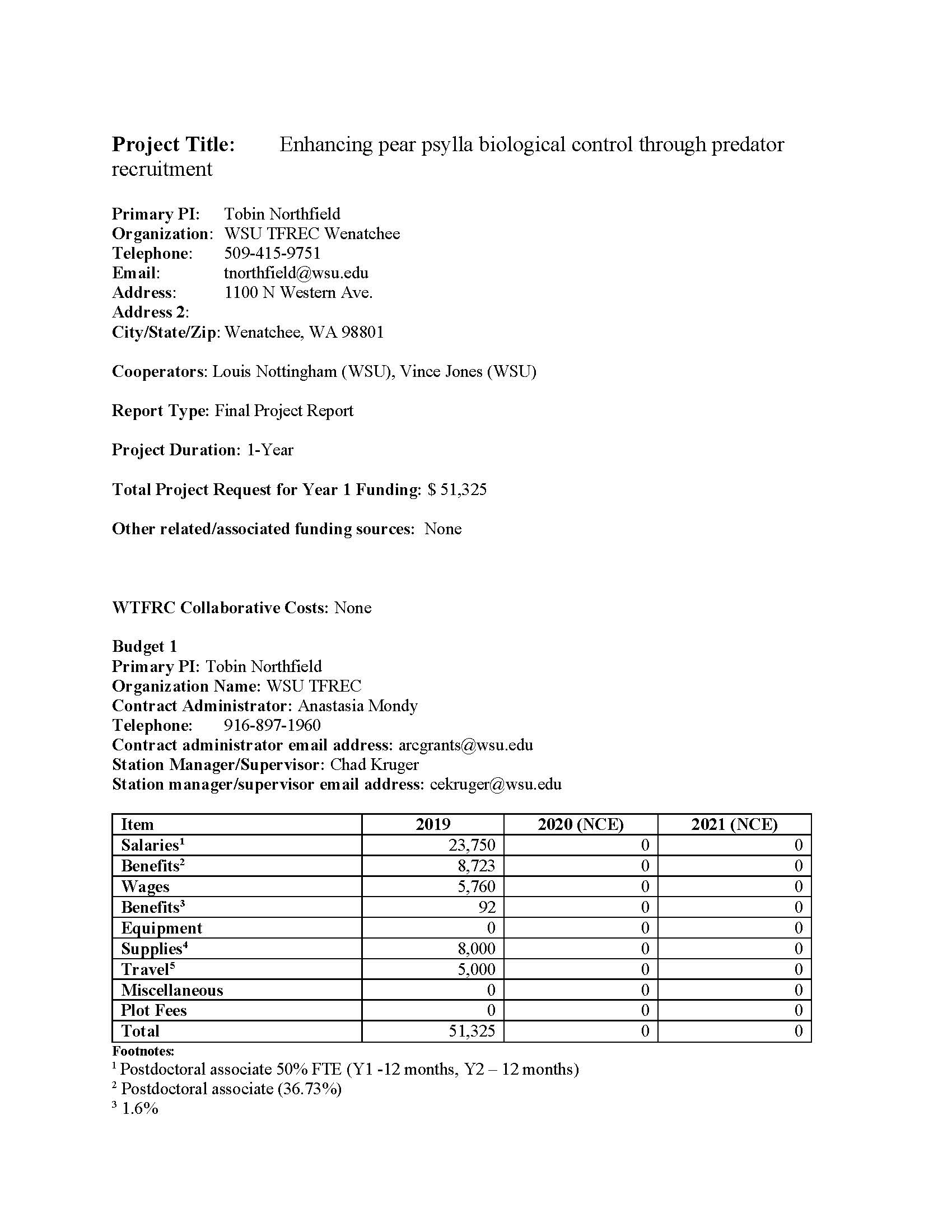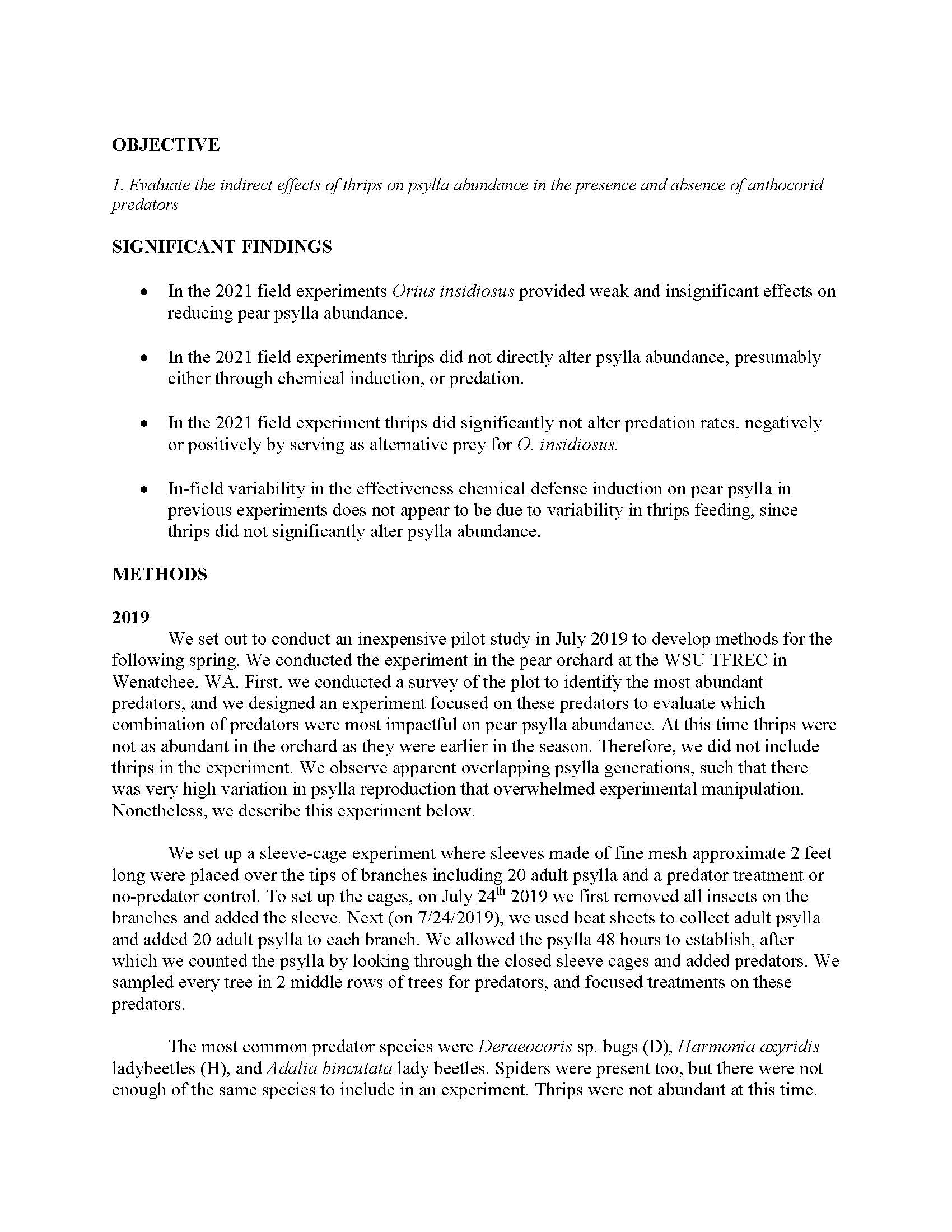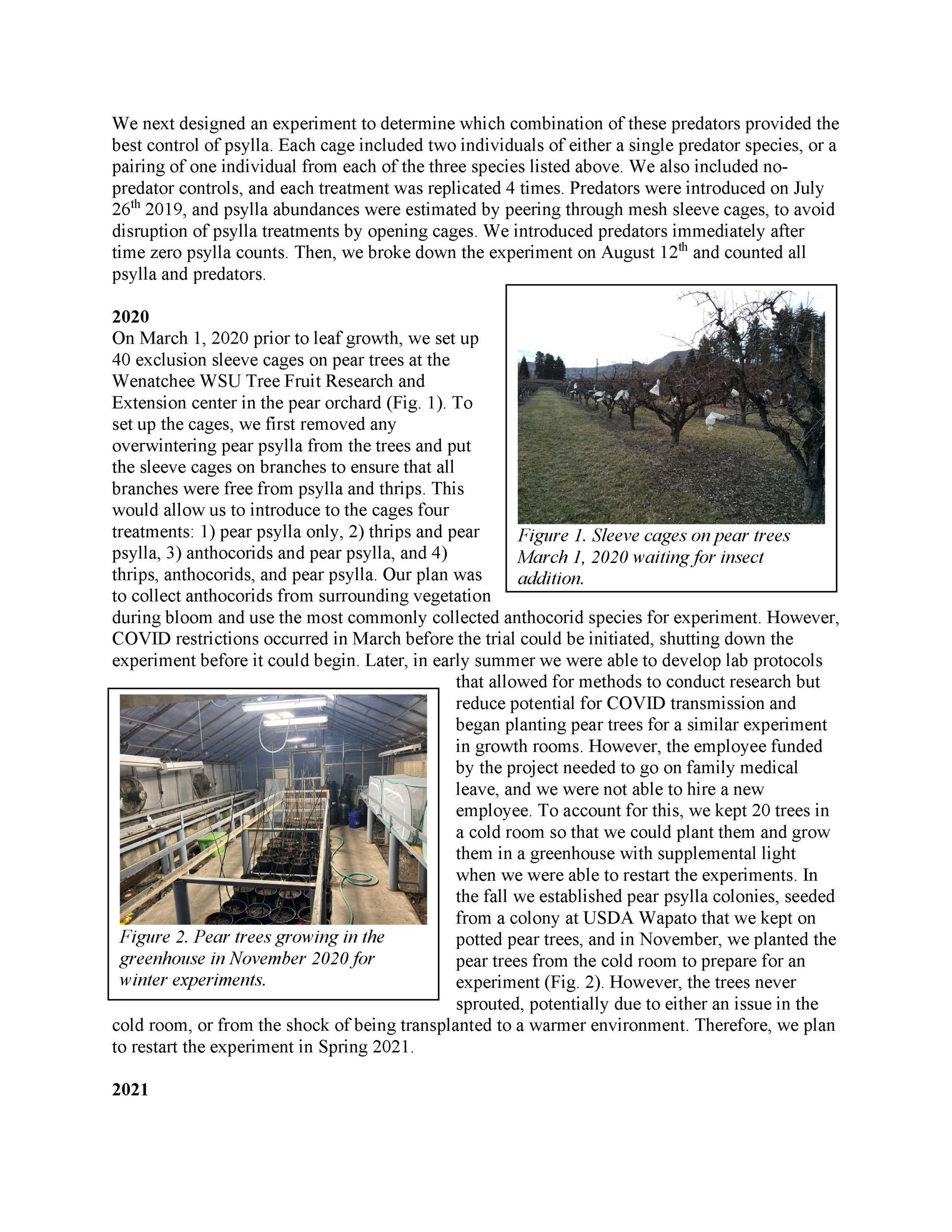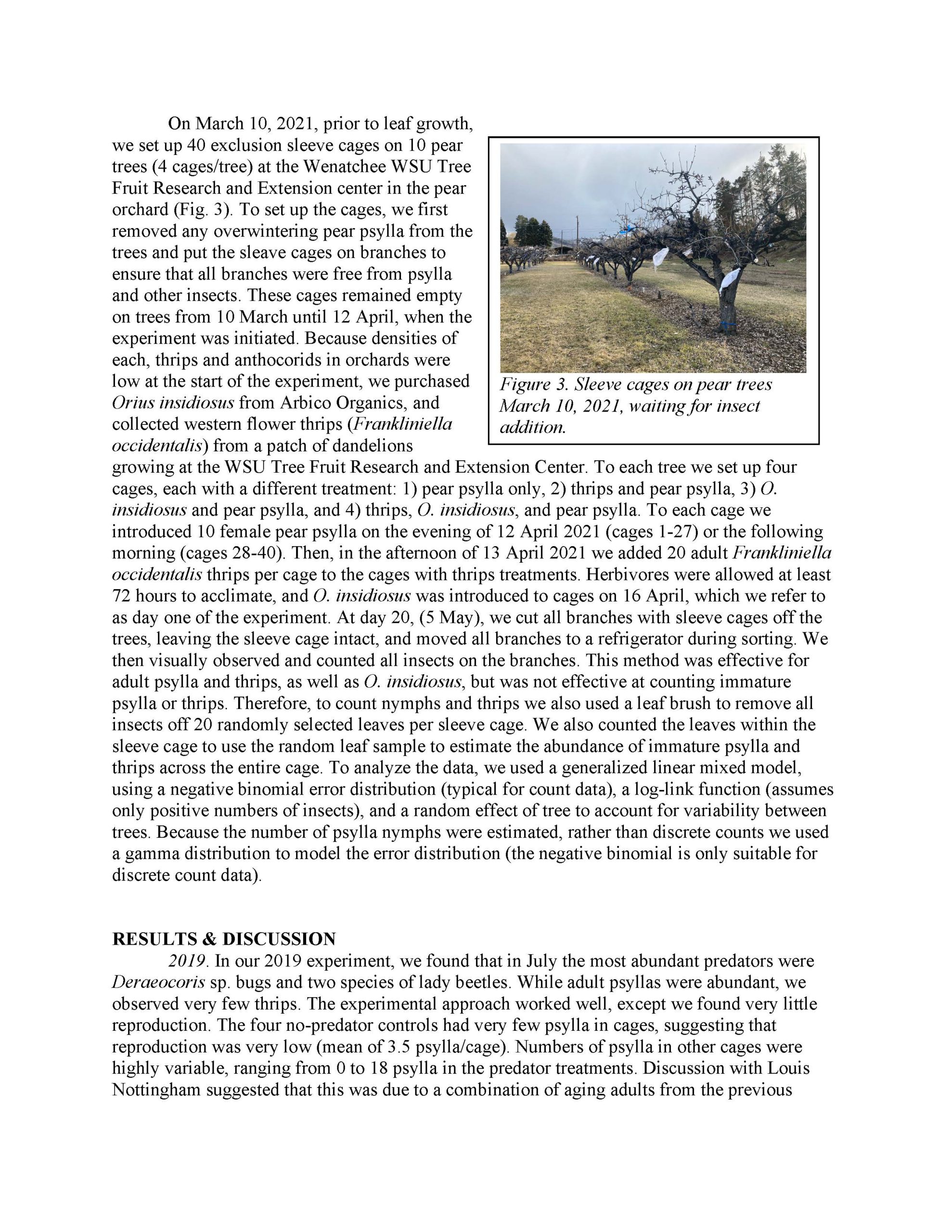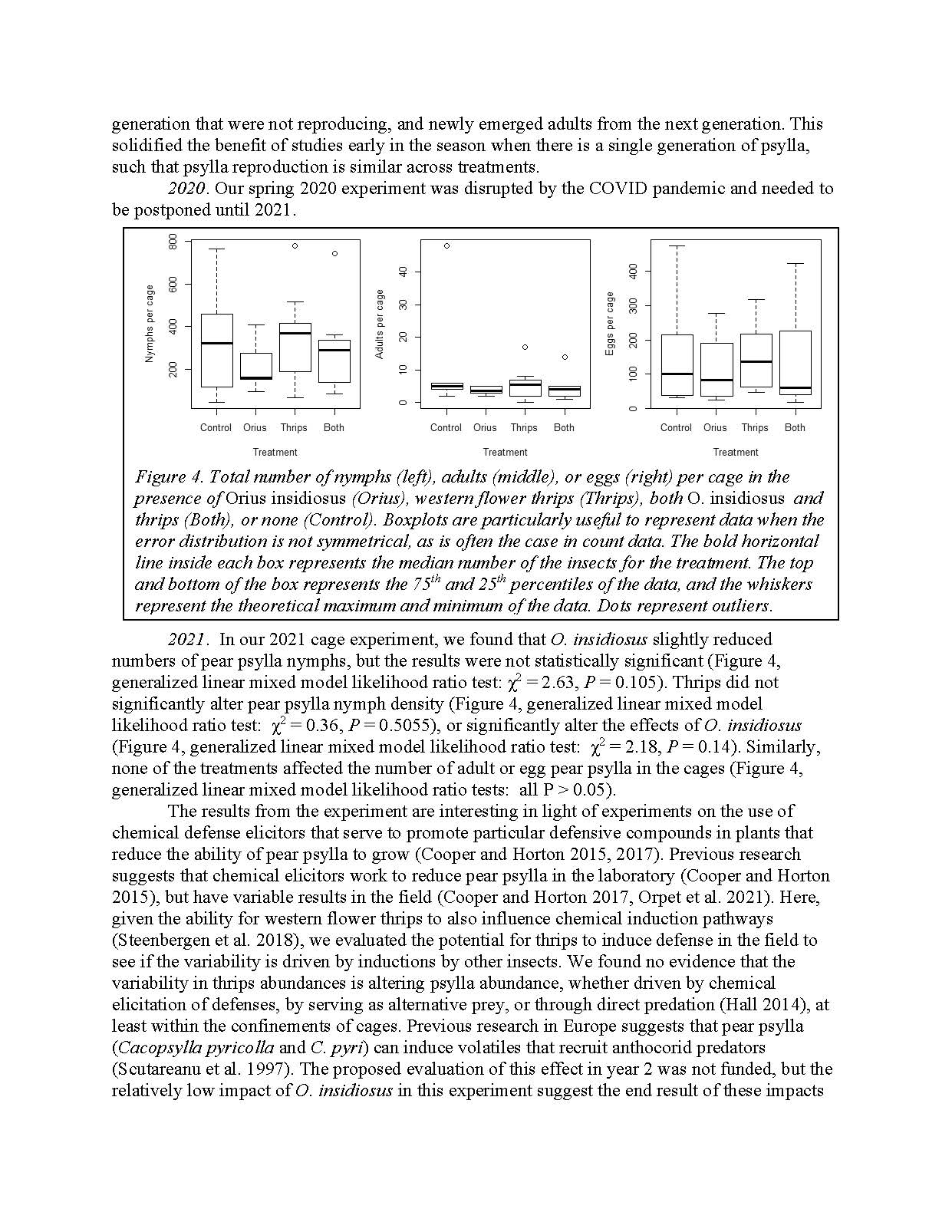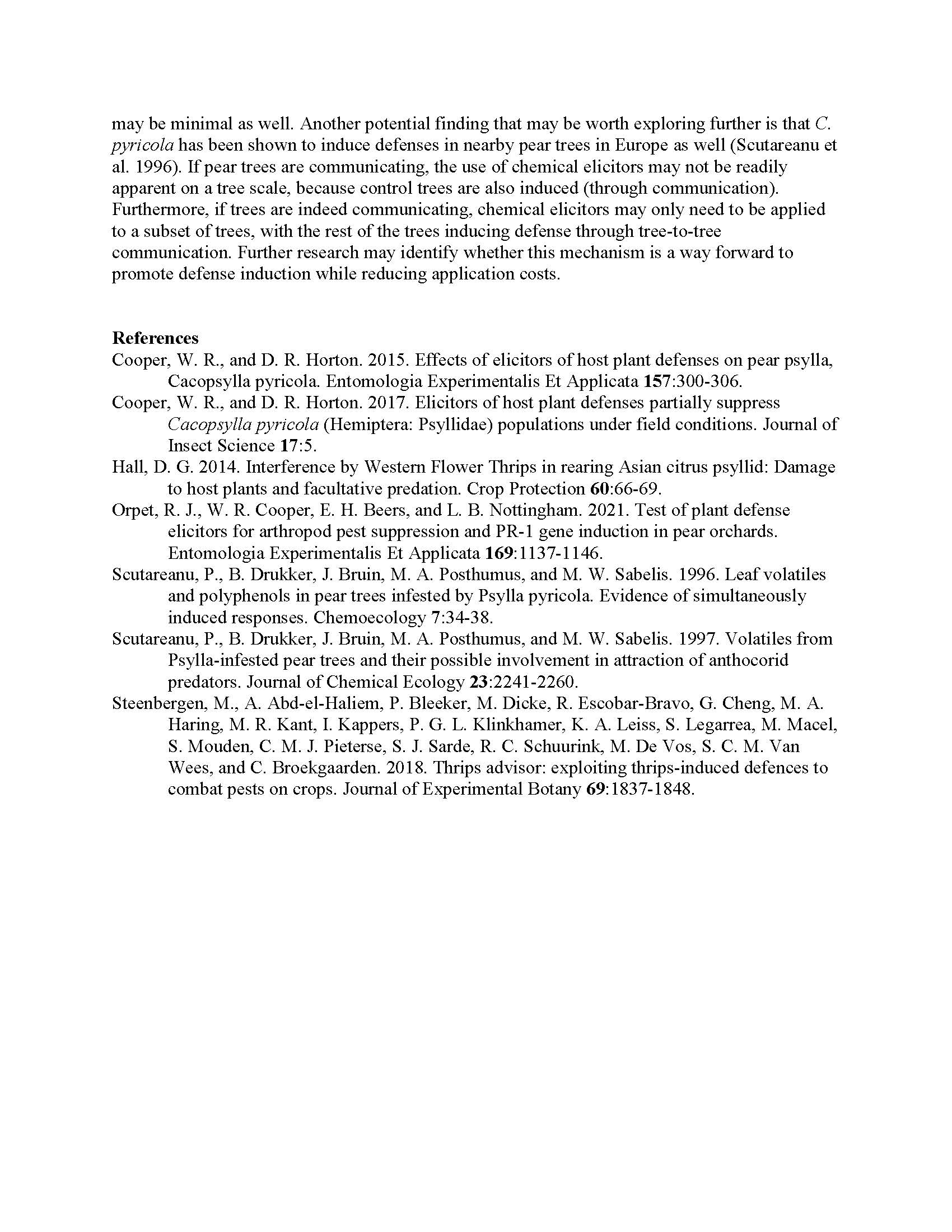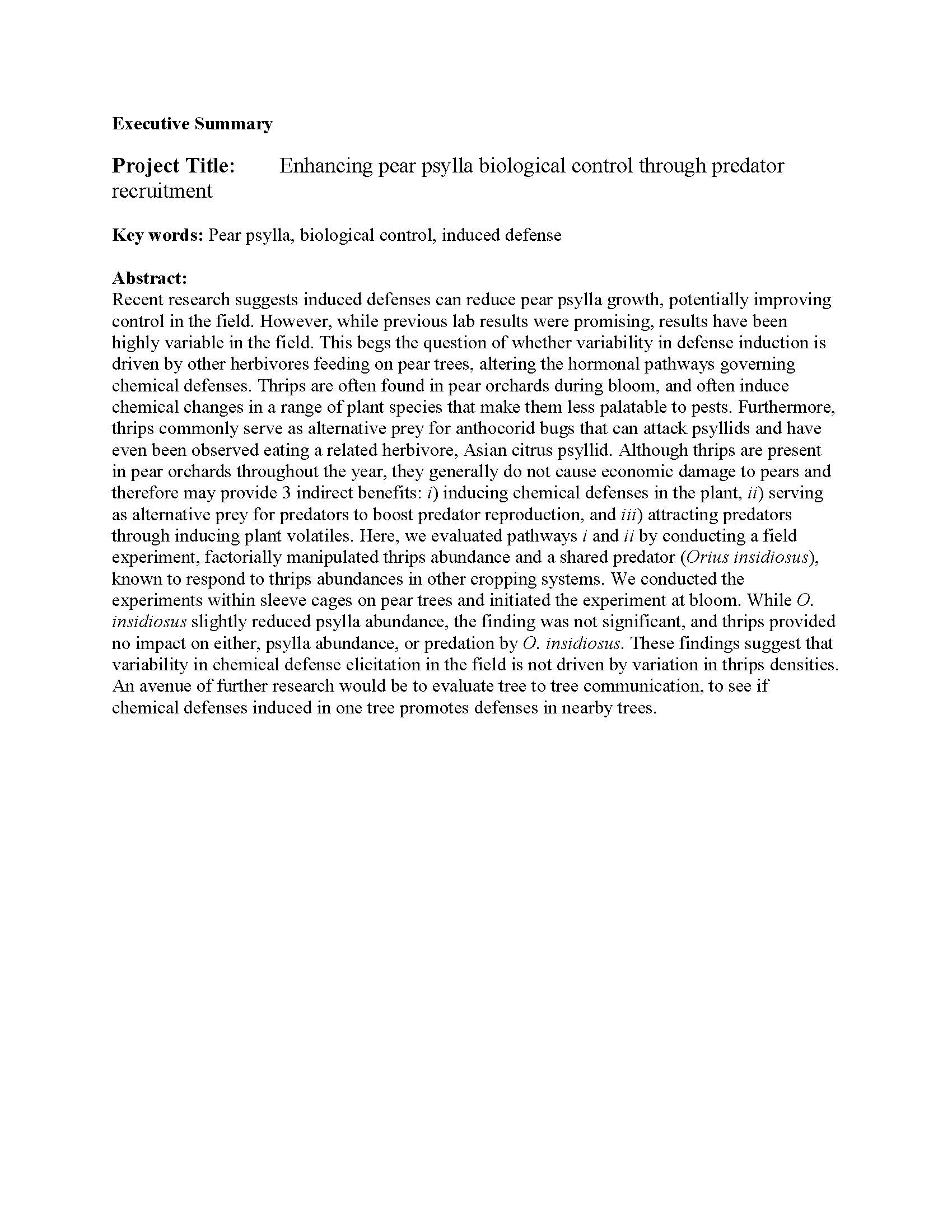Enhancing pear psylla biological control through predator recruitment
Author: Tobin Northfield
Published: 2022
Summary: Recent research suggests induced defenses can reduce pear psylla growth, potentially improving control in the field. However, while previous lab results were promising, results have been highly variable in the field. This begs the question of whether variability in defense induction is driven by other herbivores feeding on pear trees, altering the hormonal pathways governing chemical defenses. Thrips are often found in pear orchards during bloom, and often induce chemical changes in a range of plant species that make them less palatable to pests. Furthermore, thrips commonly serve as alternative prey for anthocorid bugs that can attack psyllids and have even been observed eating a related herbivore, Asian citrus psyllid. Although thrips are present in pear orchards throughout the year, they generally do not cause economic damage to pears and therefore may provide 3 indirect benefits: i) inducing chemical defenses in the plant, ii) serving as alternative prey for predators to boost predator reproduction, and iii) attracting predators through inducing plant volatiles. Here, we evaluated pathways i and ii by conducting a field experiment, factorially manipulated thrips abundance and a shared predator (Orius insidiosus), known to respond to thrips abundances in other cropping systems. We conducted the experiments within sleeve cages on pear trees and initiated the experiment at bloom. While O. insidiosus slightly reduced psylla abundance, the finding was not significant, and thrips provided no impact on either, psylla abundance, or predation by O. insidiosus. These findings suggest that variability in chemical defense elicitation in the field is not driven by variation in thrips densities. An avenue of further research would be to evaluate tree to tree communication, to see if chemical defenses induced in one tree promotes defenses in nearby trees.
Keywords:

